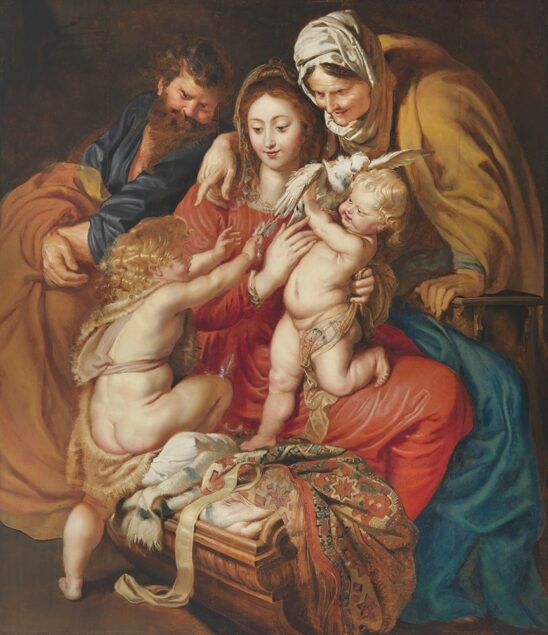Following a few years of research and enquiries conducted by curators in various archives, sources and localizations, it appears that the fascination with the works by Rubens was reflected in Silesia by hundreds, if not thousands of artefacts and crafted objects. Starting from what can be termed as the jewel in the crown, namely the painting by Rubens himself found in the private collection of Silesian Counts von Kospoth in Brzezinka, drawings and engravings created in Antwerp by apprentices employed in the Graphic School of Rubens, copies and pastiches of his paintings spread around in numerous public and private collections, libraries and churches, and ending with artistic fabrics, chalices, epergnes, etc. All of these, together with the surviving documentation of lost/perished/non-surviving works, present a varied panorama which confirms the significant scale of impact of the art of Rubens in Silesia.

Peter Paul Rubens (1577-1640), The Holy Family with St. Elizabeth St John and a Dove, 1608-1609, Los Angeles County Museum of Art, © Museum Associates 2025
The exhibition also showcases drawings by Rubens from the collection of Albrecht von Sebisch, and a Brussels tapestry dated ca. 1650, depicting Death of Roman Consul Publius Decius Mus. Another sensation are numerous Rubens prints, as well as pictures adapted from the Rubens models made in the seventeenth century by local artists.

Frans van der Hecke after Peter Paul Rubens, Death of Roman Consul Publius Decius Mus, Wawel Royal Castle, former collections of the Schlesisches Museum for Art and History in Wrocław
Curators of the exhibition: Dr. Hab. Piotr Oszczanowski, Dr. Aurelia Zduńczyk
